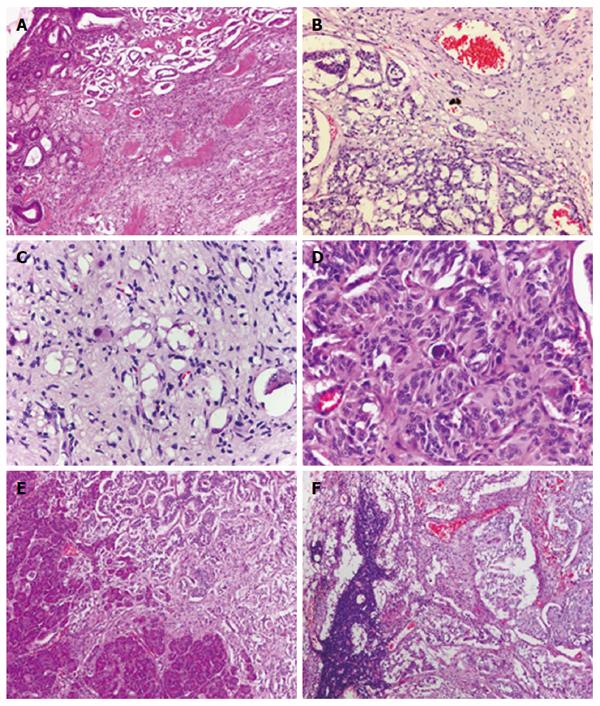Copyright
©2014 Baishideng Publishing Group Inc.
World J Gastroenterol. Nov 7, 2014; 20(41): 15454-15461
Published online Nov 7, 2014. doi: 10.3748/wjg.v20.i41.15454
Published online Nov 7, 2014. doi: 10.3748/wjg.v20.i41.15454
Figure 3 Photomicrographs of the duodenal lesion.
A: A low-power image of the duodenal lesion showed a mass occupying the submucosa and extending into muscularis propria with an infiltrative margin; B: At high-power fields, the lesion was composed of epithelioid cells arranged in a nested fashion, slender spindle-shaped cells and occasional ganglion-like cells; C, D: Occasional psammoma bodies could also be found in the lesion; The duodenal lesion exhibited a penetrative growth pattern with pancreatic infiltration (E) and regional lymph node metastasis (F). All three components of the tumor was found in effaced nodal architecture (A: HE staining with original magnification × 40; B-D: HE staining with original magnification × 400; E, F: HE staining with original magnification × 200). HE: Hematoxylin and eosin.
- Citation: Li B, Li Y, Tian XY, Luo BN, Li Z. Malignant gangliocytic paraganglioma of the duodenum with distant metastases and a lethal course. World J Gastroenterol 2014; 20(41): 15454-15461
- URL: https://www.wjgnet.com/1007-9327/full/v20/i41/15454.htm
- DOI: https://dx.doi.org/10.3748/wjg.v20.i41.15454









